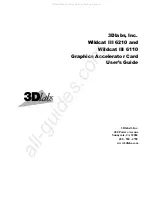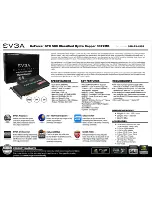
APPENDIX B
8-5
SL240 XMC User Guide
Copyright 2017
8.3 Frames
There are four basic frame types defined in VITA 17.1 – an IDLE frame, data frame, a SYNC
without data frame, and a SYNC with data frame. The data is divided into frames so the FPDP
signals are sampled at some minimum interval, and so the receiver is guaranteed to see IDLEs to
maintain synchronization. SYNC is used to delimit data streams and maintain host program
synchronization. This signal is under user control for PCI-based products, and is the same as the
FPDP /SYNC signal for CMC/FPDP based products. Whenever a SYNC appears on the output
of the Transmit FIFO, the current frame is terminated and the proper SYNC frame (SYNC with
data or SYNC without data) is sent. Figure B-1 shows the four types of frames and the ordered
set placement within those frames.
Figure B-1 VITA 17.1 Framing Protocol
Summary of Contents for FHA5-XE1MWB04-00
Page 2: ......
Page 6: ......
Page 7: ......
Page 8: ......
Page 9: ...SL240 XMC PCIe Card 1 FOREWORD ...
Page 10: ......
Page 13: ...SL240 XMC PCIe Card 2 INTRODUCTION ...
Page 14: ......
Page 18: ......
Page 19: ...SL240 XMC PCIe Card 3 TECHNICAL SUPPORT ...
Page 20: ......
Page 22: ......
Page 23: ...SL240 XMC PCIe Card 4 PRODUCT OVERVIEW ...
Page 24: ......
Page 35: ...SL240 XMC PCIe Card 5 INSTALLATION ...
Page 36: ......
Page 42: ......
Page 43: ...SL240 XMC PCIe Card 6 OPERATION ...
Page 44: ......
Page 49: ...SL240 XMC PCIe Card 7 APPENDIX A ...
Page 50: ......
Page 59: ...SL240 XMC PCIe Card 8 APPENDIX B ...
Page 60: ......
Page 66: ......
Page 67: ...SL240 XMC PCIe Card 9 APPENDIX C ...
Page 68: ......
Page 71: ...SL240 XMC PCIe Card 10 APPENDIX D ...
Page 72: ......
















































